How to Choose the Best Bedding for Hamsters
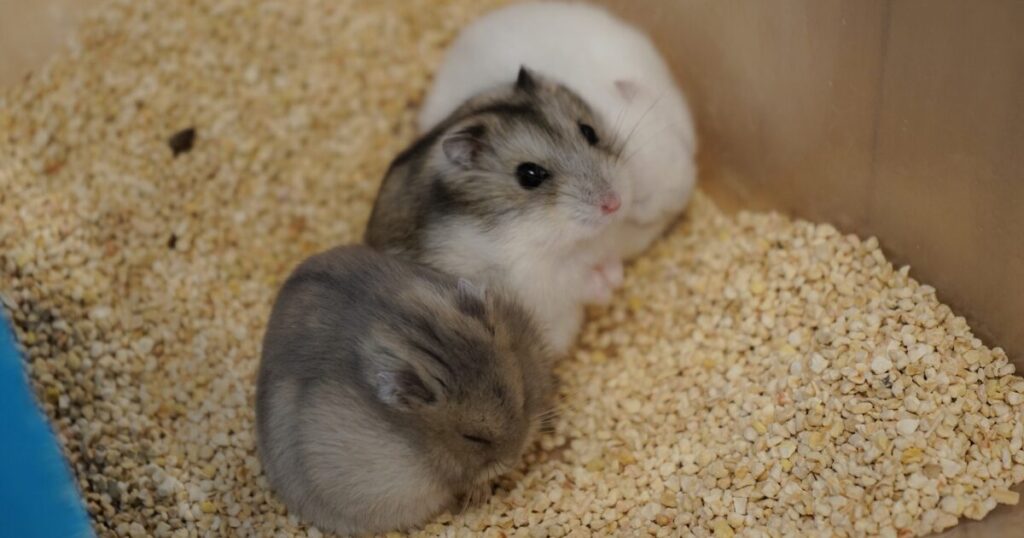
![]() Introduction:
Introduction:
Hamsters are tiny bundles of joy, full of energy and personality. Whether you’ve just brought one home or you’re preparing for a future furry companion, one of the most important decisions you’ll make is how to create a comfortable, safe, and happy habitat. And guess what? It all starts from the ground up—literally. Bedding is the foundation of your hamster’s world, and choosing the best bedding for hamsters can make a huge difference in their overall well-being.
Just like we feel more relaxed on a soft mattress and cozy sheets, hamsters thrive in clean, cushioned bedding that allows them to burrow, build nests, and sleep soundly. But with so many options on the market—wood shavings, paper-based bedding, hay, coconut fiber—it’s easy to feel overwhelmed. That’s where this guide comes in.
We’ll walk you through everything you need to know about hamster bedding: why it matters, what to look for, which materials are best, and even where to find quality options without breaking the bank. You’ll also learn how to avoid the unsafe stuff that can cause serious health issues.
Why Bedding Matters: The Secret to a Happy, Healthy Hamster
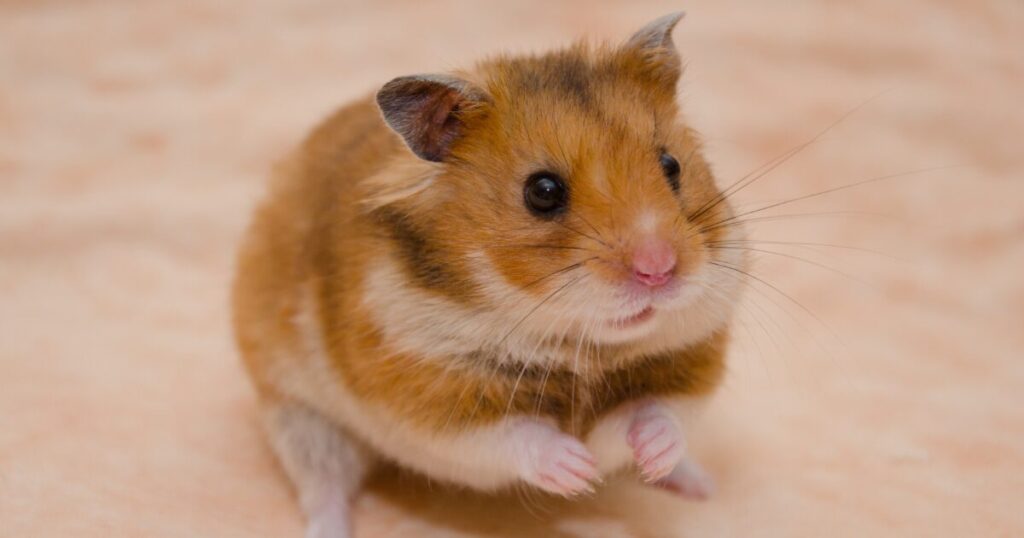
Let’s get one thing clear: bedding is not just a soft surface for your hamster to walk on—it’s their entire environment. Unlike cats or dogs that roam around your home, a hamster’s cage is their world. That means the bedding you choose affects everything from hygiene and comfort to mental stimulation and long-term health.
Bedding is for More Than Sleeping
Hamsters are natural burrowers. In the wild, they build elaborate tunnel systems underground to sleep, hide from predators, and store food. A hamster in a cage still has those same instincts. When you provide a deep layer of soft, moldable bedding, you’re giving your hamster the chance to express those natural behaviors.
If the bedding is too shallow, too hard, or made of poor-quality materials, your hamster could become stressed or even depressed. And yes, hamsters can absolutely suffer from boredom and stress if their environment isn’t stimulating enough!
The Health Benefits of Quality Bedding
Using the best bedding for hamsters can:
-
Help prevent respiratory infections (by minimizing dust)
-
Reduce stress and anxiety (by allowing them to burrow and hide)
-
Control odors and bacteria
-
Protect against foot sores or skin irritation
-
Create a thermally insulated nest for comfort during sleep
Think of bedding as a hamster’s mattress, play area, pantry, and restroom—all rolled into one. If it’s not clean or comfortable, they’ll suffer the consequences.
The better the bedding, the better the hamster’s life. And that means more fun, cuddly, and healthy days with your new friend.
What Makes the Best Bedding for Hamsters? Let’s Break It Down! How to Choose the Best Bedding for Hamsters!
 What Makes the Best Bedding for Hamsters? Let’s Break It Down!So now that we know why bedding is such a big deal, how do you actually choose the best bedding for hamsters? There are several key qualities that make some options stand out above the rest.
What Makes the Best Bedding for Hamsters? Let’s Break It Down!So now that we know why bedding is such a big deal, how do you actually choose the best bedding for hamsters? There are several key qualities that make some options stand out above the rest.
1. Absorbency
This is the big one. Hamsters urinate frequently, and a cage with poor absorbency will become soggy, smelly, and unsanitary in no time. Good bedding soaks up moisture efficiently and keeps the surface layer dry for your hamster to walk and burrow comfortably.
2. Odor Control
A clean-smelling cage = a happier you and a healthier hamster. While no bedding can eliminate odors completely, some materials, like paper and hemp, are known to absorb ammonia and mask smells better than others.
3. Low Dust Content
Dusty bedding is a nightmare for hamsters. These little critters have sensitive respiratory systems, and prolonged exposure to dust can lead to sneezing, wheezing, and even chronic illness. Always look for bedding labeled as “low dust” or “dust-free.”
4. Soft Texture
Rough or sharp bedding materials (like certain wood shavings) can cause tiny scratches or abrasions on your hamster’s feet, leading to infections. The best bedding for hamsters is soft, fluffy, and gentle.
5. Safety
Some materials may seem cozy but are actually harmful. Scented bedding, for example, may irritate a hamster’s nose and lungs. Always opt for unscented, natural bedding that’s clearly labeled as safe for small pets.
6. Burrow-Friendly
Your hamster needs bedding that’s dense enough to hold the shape of tunnels but light enough to dig through. If the material collapses too easily or is too tightly packed, it won’t allow for proper digging.
Keeping these six factors in mind will guide you toward the best bedding for hamsters every time. Up next, let’s explore what materials fit the bill!
Soft, Safe, and Snuggly: Exploring the Best Bedding for Hamsters by Material
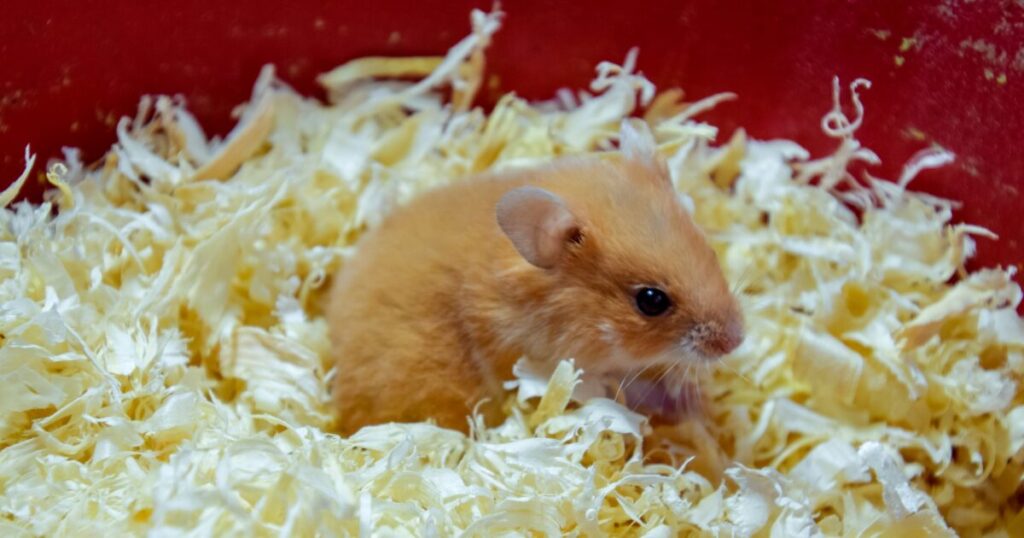
Now that you know what makes good bedding, let’s dive into the materials themselves. There’s no one-size-fits-all solution—different bedding types have unique benefits. The key is understanding your hamster’s specific needs, habits, and sensitivities. Let’s explore the most common materials used for hamster bedding and break down which ones truly stand out as the best bedding for hamsters.
1. Paper-Based Bedding
This is hands-down one of the most popular and widely recommended types of bedding for hamsters. Brands like Carefresh, Kaytee Clean & Cozy, and Small Pet Select produce high-quality, ultra-soft paper bedding that ticks all the right boxes:
-
Super absorbent
-
Virtually dust-free
-
Gentle on paws
-
Great for burrowing
Paper-based bedding is also biodegradable and made from recycled materials, making it an eco-conscious choice. It often comes in neutral tones or even colorful options—perfect if your kids want a vibrant hamster habitat!
Pro Tip: Make sure the paper bedding you choose is unbleached and unscented. Some cheaper versions may contain chemical residues or added fragrances, which aren’t safe for hamsters.
2. Aspen Wood Shavings
Aspen is the only type of wood shavings that’s consistently considered safe for hamsters. Unlike cedar or pine, aspen is kiln-dried, which removes harmful oils and makes it safe for small animals. It’s great for odor control and has a more natural, rustic appearance.
However, aspen bedding can be a bit rougher than paper bedding, and it may not hold tunnels quite as well. That said, it’s a fantastic option for hamsters that enjoy digging and for owners who prefer a woodsy look and feel in their pet’s cage.
3. Hemp Bedding
Looking for a sustainable, all-natural option? Hemp bedding is becoming increasingly popular among hamster enthusiasts. It’s hypoallergenic, highly absorbent, and compostable. Plus, it breaks down quickly, making cleanup easier.
Hemp bedding tends to be pricier than other types, but many find the odor control and minimal dust worth the investment. It’s a top pick for sensitive hamsters and eco-conscious owners.
4. Coconut Fiber
This earthy, dark-brown bedding is made from the husk of coconuts. It’s soft and spongy, and some hamsters love to burrow in it. Coconut fiber is especially good for dwarf hamsters that like finer textures. However, it’s best used as a supplemental bedding—mix it with paper or aspen for better absorbency and structure.
5. Timothy Hay
While not a standalone bedding material, timothy hay makes a fantastic nesting material. It adds texture, encourages natural foraging behavior, and gives your hamster something to nibble on. Just make sure it’s clean and dust-free.
6. DIY Bedding (Use With Caution)
Some owners use shredded paper or tissues as homemade bedding. While this can work in a pinch, it often lacks the absorbency and structure needed for long-term use. If you’re going the DIY route, only use plain, white, unscented paper—no colored ink or glossy print!
Say Goodbye to Odors: Best Bedding for Hamsters That Keeps Things Fresh
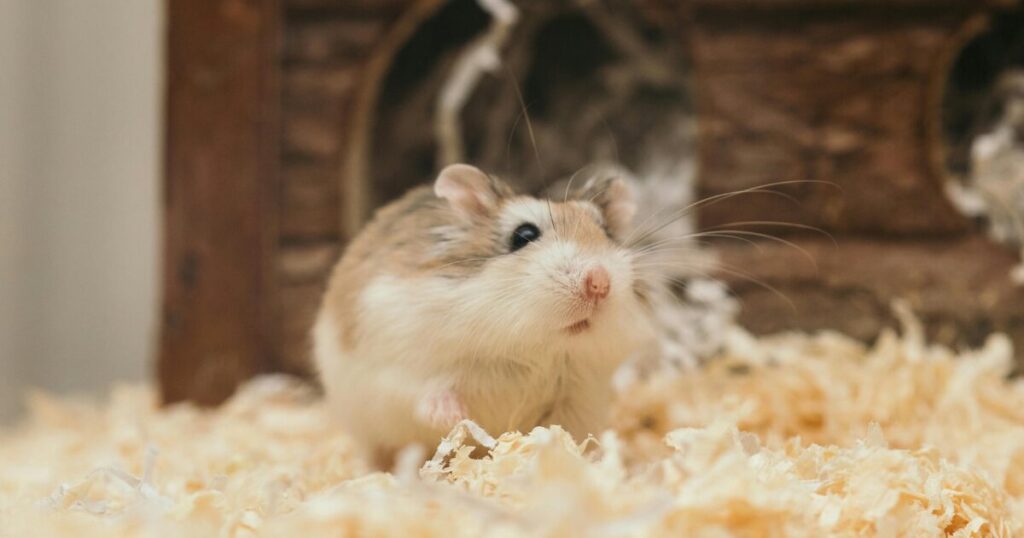
Let’s be real—nobody wants their home to smell like a rodent cage. The good news? With the best bedding for hamsters, keeping things fresh and clean doesn’t have to be a struggle.
Odor control is one of the top priorities for hamster owners, and it’s especially crucial in smaller living spaces like apartments or bedrooms where the cage may be close to everyday activity.
Why Do Hamster Cages Smell?
The primary culprit behind cage odor is ammonia—a chemical produced when hamster urine breaks down. Over time, if not properly absorbed and neutralized, this can build up and lead to that unpleasant smell.
Another source of odor is old food that your hamster hides or forgets, especially in the corners of their cage. Bedding that can wick away moisture and inhibit bacterial growth helps combat both of these issues.
Which Bedding Types Handle Odor Best?
-
Paper-Based Bedding: Brands like Carefresh and Kaytee are formulated specifically for odor control. Their fibrous structure traps moisture, keeping the top layer dry and minimizing ammonia buildup.
-
Hemp Bedding: One of the best in the odor-fighting game. It absorbs up to four times its weight in moisture and lasts longer between cleanings.
-
Aspen Shavings: Not quite as absorbent as paper or hemp, but still effective if cleaned regularly.
-
Activated Carbon Additives: Some premium paper beddings include natural odor neutralizers like activated carbon or baking soda (in safe amounts), boosting their freshness factor.
Tips for Maintaining a Fresh-Smelling Cage
-
Spot-clean daily: Remove soiled bedding, uneaten food, and waste.
-
Deep-clean weekly: Replace all bedding and sanitize the cage.
-
Use deep bedding: A thicker layer (at least 6 inches) allows hamsters to burrow and keeps the surface cleaner longer.
-
Add ventilation: A well-ventilated cage will help reduce trapped moisture and heat buildup.
Remember, odor control is not just about convenience—it’s about your hamster’s health. Strong ammonia buildup can irritate their eyes and lungs. By choosing the best bedding for hamsters and cleaning consistently, you’re protecting both your nose and your pet’s well-being.
Hamster Health First: Avoiding Unsafe Bedding and Choosing the Right One
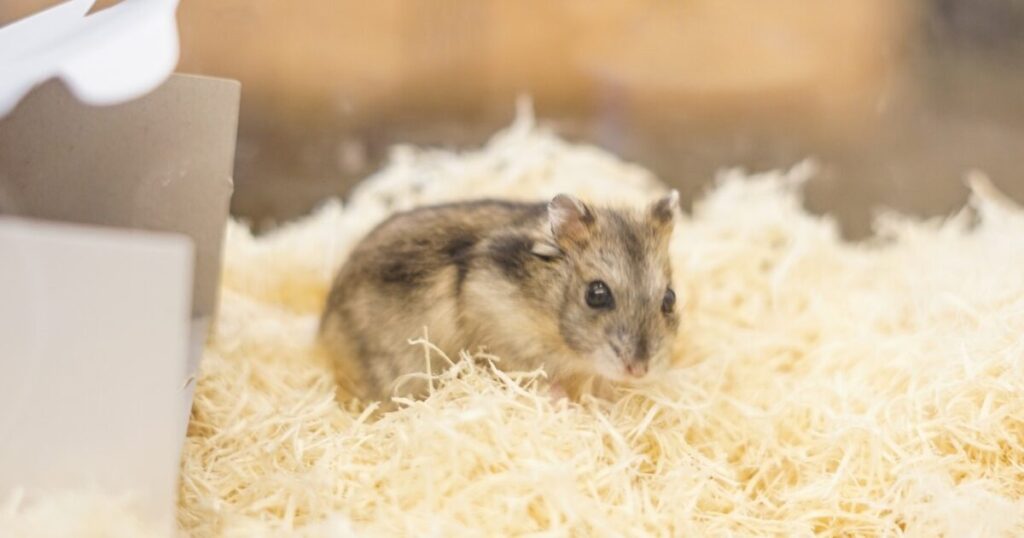
Your hamster’s health is the most important thing in the world, and choosing the right bedding plays a significant role in keeping them safe and happy. Not all bedding is created equal, and some materials can be downright harmful to your little friend. To ensure that your hamster lives a long, healthy life, it’s essential to avoid bedding that could cause irritation, breathing problems, or other health issues.
What to Avoid in Hamster Bedding
When shopping for the best bedding for hamsters, keep an eye out for the following materials, which can pose serious risks:
1. Cedar Wood Shavings
Cedar wood shavings may smell fresh, but they come with hidden dangers. The oils in cedar shavings release phenols, which are toxic to hamsters. Over time, these toxins can cause respiratory issues, skin irritation, and even liver damage. Cedar bedding also produces a strong scent that can overwhelm your hamster’s sensitive nose. While it may be a cheaper bedding option, it’s not worth the risk. Always avoid cedar wood shavings for hamster bedding.
2. Pine Wood Shavings
Like cedar, pine wood shavings contain aromatic oils that can irritate your hamster’s respiratory system. While not as toxic as cedar, pine still poses health risks, especially if the bedding hasn’t been properly processed. Pine bedding should be avoided altogether if you want the best bedding for hamsters. If you do choose pine shavings, make sure they’re labeled as kiln-dried to remove harmful oils.
3. Fluffy, Synthetic Bedding
Bedding made from synthetic fibers—often marketed as “fluffy” or “cotton-like”—can cause serious harm if ingested. If your hamster decides to chew on or eat the bedding, it could lead to dangerous internal blockages. These blockages can be fatal if not addressed promptly. Synthetic bedding also tends to break apart easily and create small, sharp pieces that could harm your hamster’s feet or skin. Stick to natural, soft materials like paper, hemp, or aspen for the safest bedding options.
4. Scented Bedding
While scented bedding might sound appealing, the added fragrances can be too strong and irritating for your hamster’s sensitive respiratory system. Artificial fragrances can lead to coughing, sneezing, or general discomfort. Additionally, some scented beddings contain chemicals that can be harmful over time. Opt for unscented bedding that’s both natural and gentle.
5. Clay-Based Cat Litter
Many pet owners are tempted to use clay-based cat litter as hamster bedding. However, this is a huge no-no. Clay litter is dusty, which can cause severe respiratory issues for hamsters. It also doesn’t absorb moisture well and tends to turn soggy, creating a dirty and uncomfortable environment. Stick to the best bedding for hamsters, which is designed specifically for their needs.
What to Look for in Safe Bedding
Now that we’ve covered what to avoid, let’s talk about what makes bedding safe. When looking for the best bedding for hamsters, make sure it is:
-
Non-toxic and natural: Opt for biodegradable, eco-friendly materials like paper, hemp, and aspen.
-
Dust-free: Bedding with low dust content is essential for hamsters to breathe easy.
-
Absorbent: Bedding that absorbs moisture quickly helps control odor and keeps your hamster’s home dry and clean.
-
Soft and comfortable: Hamsters need bedding that won’t irritate their skin or cause injury. Soft bedding allows them to burrow comfortably without discomfort.
-
Clean and free of chemicals: Choose bedding that’s been processed without the use of harmful chemicals or dyes.
By selecting bedding that meets these criteria, you’ll ensure your hamster has a safe and healthy environment to thrive in.
Real Reviews, Real Results: Tested Picks for the Best Bedding for Hamsters
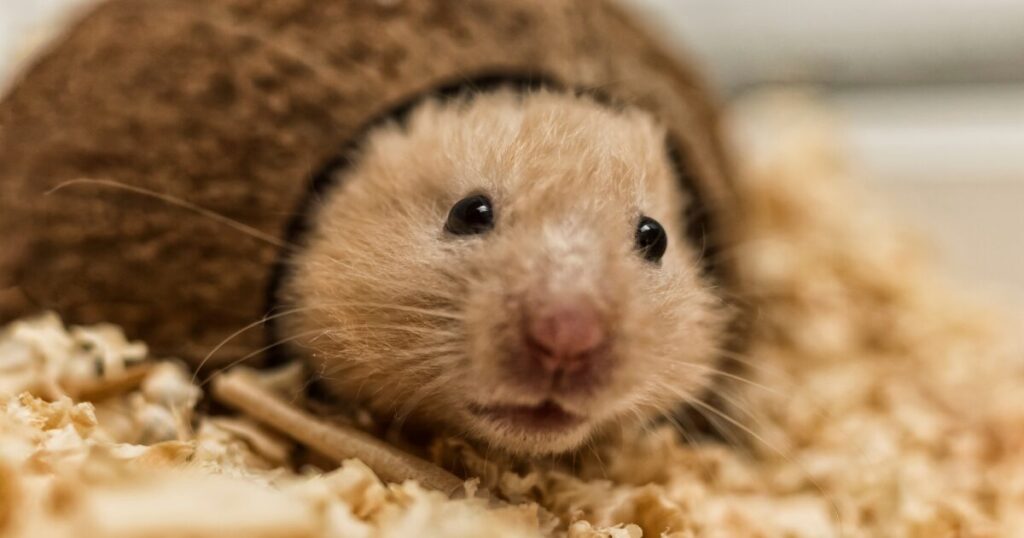
When it comes to choosing the best bedding for hamsters, it’s always helpful to hear from fellow hamster owners. We’ve gathered reviews from experienced hamster parents and expert recommendations to help you pick the best bedding for your furry friend. Below are some top-rated options that have been tried, tested, and loved by many.
1. Carefresh Complete Comfort Bedding
Carefresh is a brand that has earned a reputation for producing high-quality bedding that’s both soft and highly absorbent. It’s made from recycled paper, making it an eco-friendly choice. The bedding is gentle on your hamster’s sensitive paws, and it effectively controls odors for longer periods. Plus, it’s available in multiple colors, so you can add a touch of fun to your hamster’s habitat.
-
Pros: Soft, absorbent, eco-friendly, great odor control
-
Cons: Can be pricier than other options
2. Kaytee Clean & Cozy Bedding
Kaytee Clean & Cozy bedding is another popular choice among hamster owners. Made from 100% recycled paper, it’s soft, absorbent, and free of dust. The bedding comes in a variety of sizes and colors, allowing you to customize your hamster’s environment. Kaytee is particularly known for its affordability, making it an excellent option for pet owners on a budget.
-
Pros: Affordable, soft, eco-friendly, available in different sizes and colors
-
Cons: Some users report it can compress over time
3. Fitch Bedding
Fitch Bedding is a standout product for eco-conscious hamster owners. It’s made from recycled paper and has superior absorbency. Fitch bedding is compostable, so it’s a great option if you want to reduce your carbon footprint. It also controls odors effectively, making it a great choice for small animal owners who prioritize sustainability.
-
Pros: Highly absorbent, eco-friendly, excellent odor control
-
Cons: Slightly more expensive than some other options
4. Oxbow Pure Comfort Bedding
Oxbow is a trusted brand in the small pet industry, and their Pure Comfort Bedding is a fantastic option for hamsters. Made from natural, sustainable materials, this bedding is highly absorbent and virtually dust-free. It’s gentle on your hamster’s feet and provides a cozy nesting material. Plus, it’s an excellent choice for hamsters with respiratory sensitivities.
-
Pros: Natural, dust-free, great for sensitive hamsters
-
Cons: On the pricier side
Bedding on a Budget: Where to Find the Best Bedding for Hamsters Without Breaking the Bank
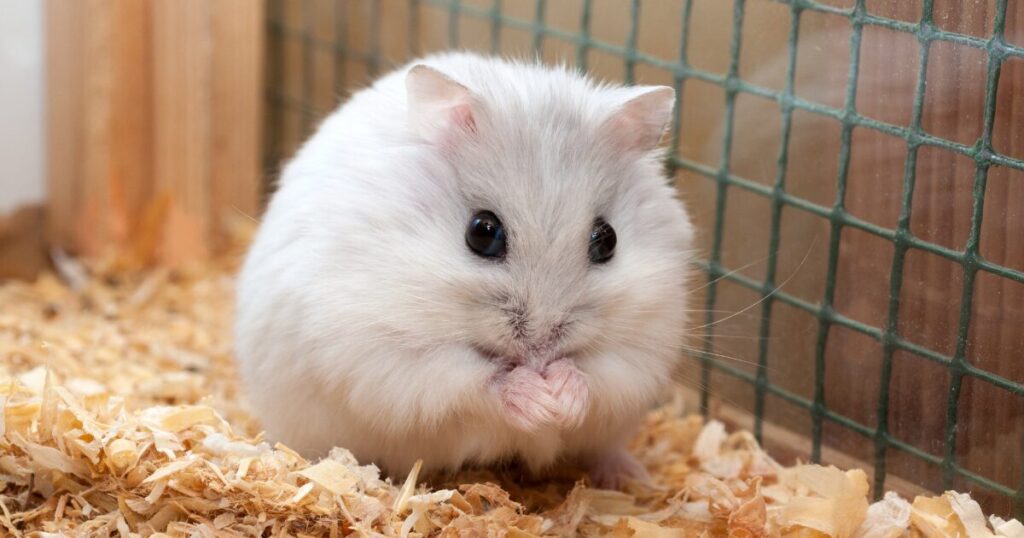
Let’s face it: pet care can get expensive. While it’s important to invest in the best bedding for hamsters, there are plenty of affordable options that don’t sacrifice quality. If you’re looking to save a bit of cash, here are a few ways to score great bedding without spending a fortune.
1. Shop Online for Discounts
Websites like Amazon, Chewy, and Petco often have sales, promotions, and bulk discounts. Shopping online also allows you to compare prices across different brands, ensuring you’re getting the best deal.
2. Buy in Bulk
Many pet stores offer bulk-buy options for bedding, which can save you money in the long run. By purchasing larger quantities, you’ll pay less per unit. Plus, you won’t need to worry about running out of bedding in the middle of the month!
3. Look for Generic Brands
Not every pet bedding brand needs to be a household name. Generic or store-brand bedding can often be just as effective as the big-name brands. Check for reviews to ensure quality, and you may find that the savings are well worth it.
4. Keep an Eye on Sales and Seasonal Promotions
Pet stores often have sales around holidays or end-of-season clearances. Be sure to check your local pet store’s flyer or online promotions to snag bedding at a discounted price.
5. Consider DIY Options
If you’re feeling creative, you can make your own bedding. Simply shredding old, plain newspaper or using unscented paper towels (in moderation) can be a budget-friendly and safe alternative.
By shopping smart, you can ensure your hamster has top-quality bedding without breaking the bank.
Conclusion: Creating the Perfect Home for Your Hamster
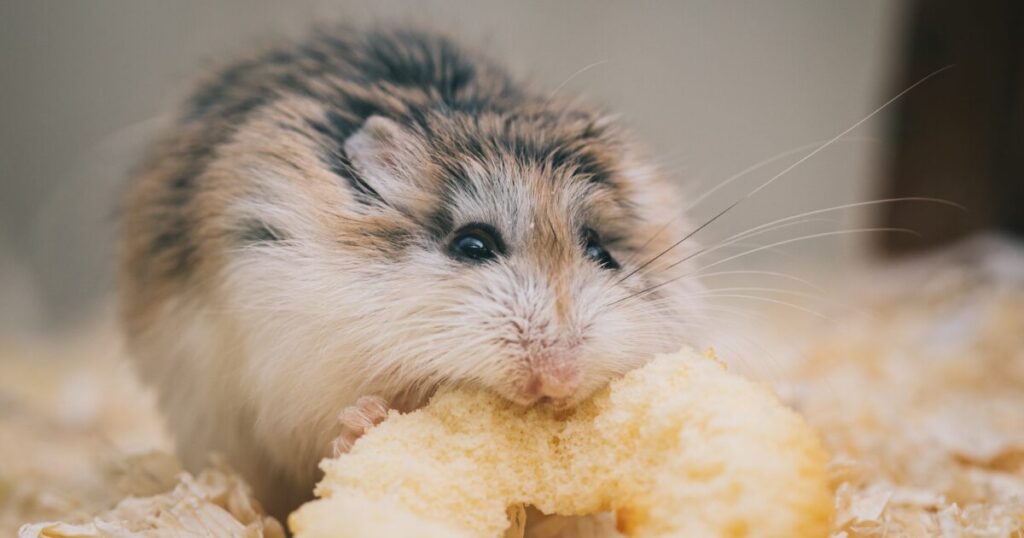
Choosing the best bedding for hamsters is one of the most important decisions you’ll make as a pet parent. Bedding isn’t just a surface—it’s the foundation of your hamster’s entire environment. The right bedding promotes comfort, health, and happiness, while the wrong bedding can lead to stress, illness, or even early death.
Now that you understand the essential factors to look for in bedding, including safety, absorbency, and odor control, you’re ready to create a perfect, cozy home for your hamster. Whether you choose paper-based bedding, hemp, or aspen, remember that consistency and cleanliness are key.
For more tips, tricks, and hamster care advice, be sure to visit The Paws Hub, where we’re dedicated to helping you give your hamster the best life possible!